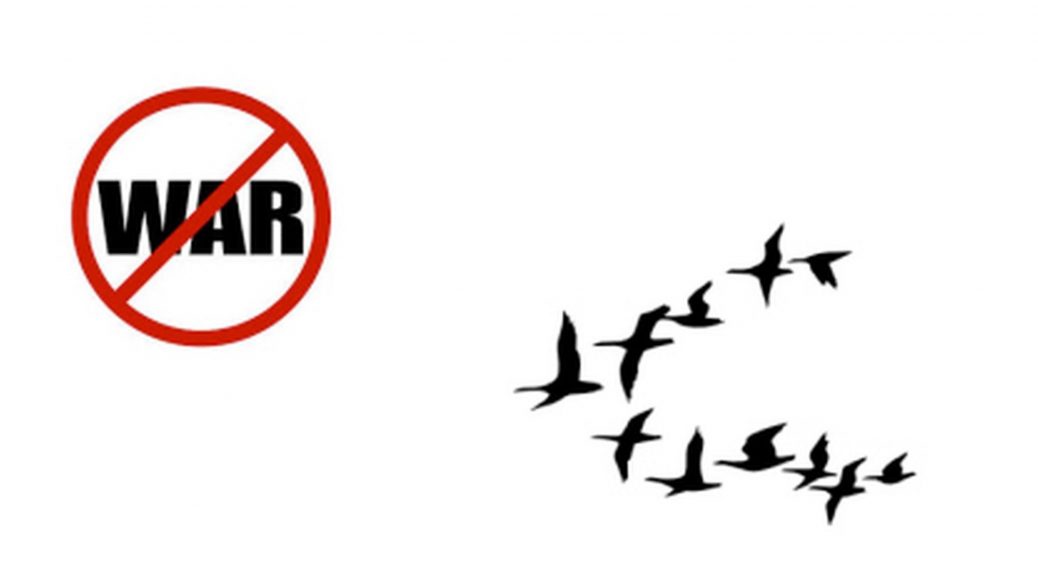The uncanny image of green soldiers checking their radio equipment and nightvision goggles was taken by Staff Sgt. Ryan Campbell at Fort Drum, New York on May 18, 2016 and is one of hundreds of pictures offered at any time in an ever changing gallery on the site of the United States Department of Defense (http://www.defense.gov/). It will never be an iconic image in the sense defined and elaborated by several of the articles that follow. There are too many of these photographs and they are chosen for the routine inconsequence of the moments they record. The Department of Defense presents photographs, often of remarkable aesthetic appeal, of heavily equipped soldiers doing peaceful things: sharing food with civilian populations where they are stationed, admiring sunrises and sunsets, repairing things, training, taking selfies in exotic places sometimes with exotic people grinning in the same frame. The weight of the soldier equipment seems more burden than menace in such images that embody the adage of military duty from Roman times: Si vis pacem, para bellum (To make peace prepare for war). The soldier is there and equipped. Peace seems to have arrived. But because it has been chosen for a purpose once by the Department of Defense, and now again, for a further purpose, this picture begins to share some characteristics with more famous photographs discussed in some of these articles.
The manipulation and deployment of photographic images to the point that they move beyond their paper and chemical origins to have a life as icon or memory with healing or wounding power are the subject of this issue of Arts and War of Peace Review. The changes to that process brought about by digital photography are important to several articles as well. This photograph, that probably has never existed on paper, has passed from Sgt. Campbells’s camera that gave it its porthole shape and its deliberate green tinge (easier for the human eye to see with less need for electronic enhancement), to the computers of the Defense department to my computer and now to yours. The activity it represents is peaceful in upstate New York where there is no war. There are no identifiable weapons in the picture. But the activity of perfecting night vision and the communications system that will transmit that vision can be menacing. Here the night imaging has given the soldiers pale green auras making them ghostlike or superhuman: the extent of their power is enhanced by their equipment just as the energy of their bodies seems to flow beyond their uniforms. Will this power make peace or war or bring about peace through war? Is the photograph a celebration of remarkable technology during a short night in May, or is it a threat? In previous issues, Arts of War and Peace has addressed war poetry examining and appreciating poets who by insisting on accurately and honestly recalled details and emotions have created sympathy for pacific causes. The limits of sympathy aroused by poetic depictions of the brutality of war inside the symbolic system of war have also been examined. In this issue we have war images. What could leave a more relentlessly accurate record of details and brutality than images capturing light off specific events? Photographs have been important to undertaking war as intelligence and record-keeping from early on. They have been instrumental in establishing traces of destruction and suffering as a basis for memorials, as a call for revenge or in a parallel to much modern war poetry, as a call for an end to war. They have been used in propaganda of all sorts.
Today it is a common place to say that the digital revolution has increased exponentially both the number of potential war photographers (does any soldier not carry a camera phone?) and the number of outlets, forums or sites for viewing. The contrast with poetry is interesting because iconic photographs, like the handful of well-known images from the Civil Rights era or the war in Vietnam, all credited with political as well as cultural impact, are no longer possible we learn in our articles, because of this proliferation. It is hard to imagine poetry, with comparatively fewer authors and more rarified outlets, suffering the same fate. The ubiquity of images coupled with their emotional appeal requires ever more elaborate explanation and an elaborate literacy to be of use. Sometimes they need digital manipulation by the viewer to reveal what they in fact hide. Like the green aura around the soldiers in the picture above, we sometimes see what was never there. There was comfort even in the harshest clarity of poetry. There is an urgency to learning with and from the new noniconic photosphere
Edited by Mark Meigs, May 2016.
François Brunet
Introduction
Camille Rouquet
Creation and Afterlife of the Iconic Photographs of the Vietnam War
Angeliki Tseti
Photo-textuality, Witnessing, and the Convergence of Trauma Memories in W. G. Sebald’s Austerlitz
Wilco Versteeg
War Beyond Photography: Digitally Embellished Imaging and Contemporary Conflicts
Gwennaëlle Cariou
For All the World to See: Memorializing the Images of the Civil Rights Movement
William Gleeson
Enhance, Engage, Reinforce, Connect: Classroom Uses of Civil War Photographs
REVIEWS
Wilco Versteeg
Timely Reflections: War Photography at Tate Modern
Gaël Schmidt-Cléach
Pop Culture for Hire: Mercenaries in the Expendables Series
INTERVIEW
Peter King on Catholic Worker Pacifism
Conducted by Jennifer Kilgore-Caradec
Jennifer Kilgore-Caradec
Note: The Pacifism and Poetics of Dorothy Day

